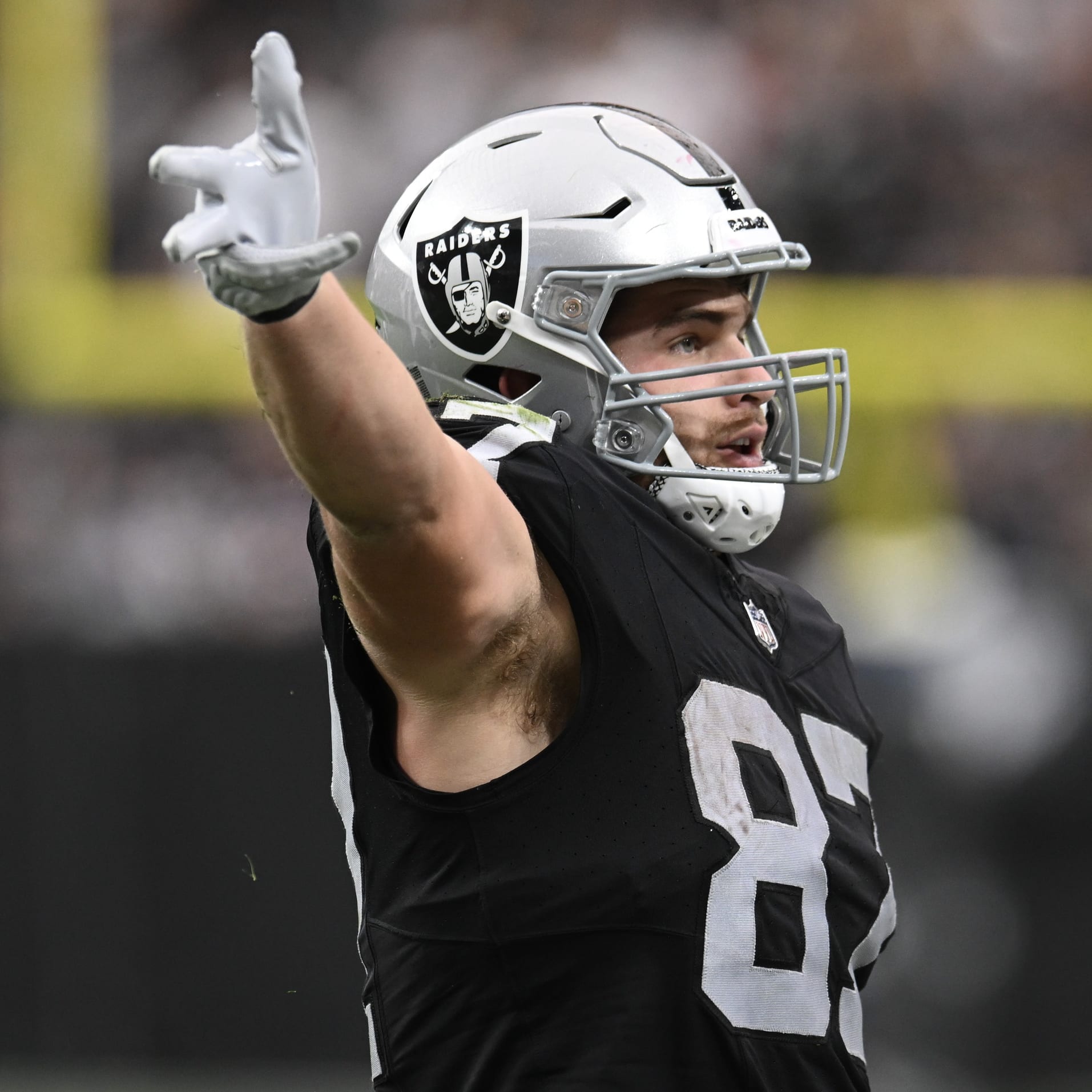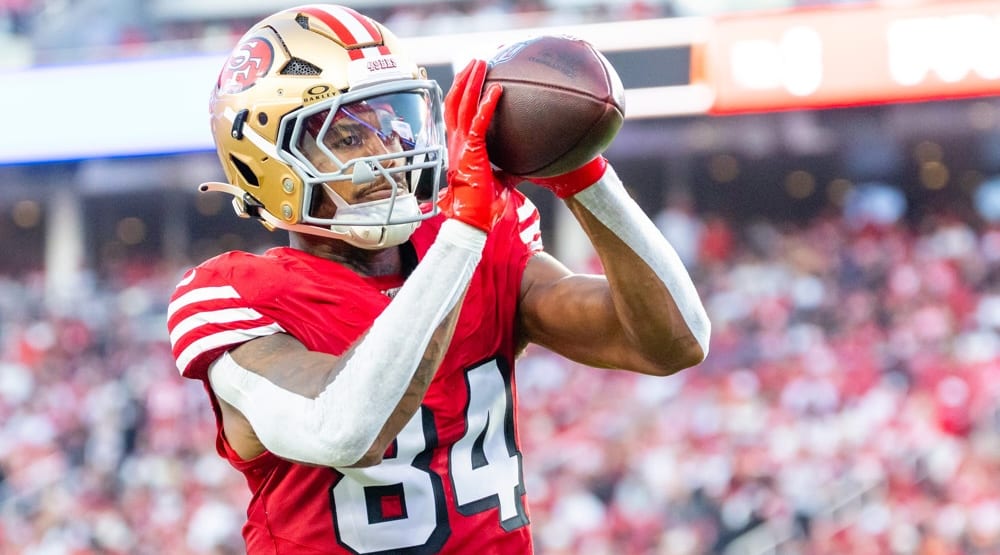Most experienced fantasy managers go into drafts with some type of cheat sheet, but let's face it, even with your order of players listed in advance, we all question similarly ranked players when we're on the clock. The goal of this series is to lay out the upside and downside of players who have similar ADPs. We'll compare players at the same position because that's what fantasy managers typically do when they're targeting a specific pick.
Fantasy GMs looking to address running back after the consensus top 15 are off the board might feel the need to get a strong option before the pool of obvious candidates dries up, so in this ADP battle, we'll take a look at David Montgomery, Chris Carson and Miles Sanders, who typically go between picks 34 and 44 in drafts.
David Montgomery
Upside: If David Montgomery's performance down the stretch last year earned the coaching staff's trust that he can be a three-down back, he could flirt again with the 24.8 touches per game he had in his last five games. If given that amount of work, his 93rd percentile broken-tackle rate along with 76th percentile yards after contact could allow him to continue to perform at a high level. In addition, if Justin Fields takes over at QB early in the season, his mobility could open more running space for Montgomery, and we've seen plenty of RBs prosper while playing with a dual-threat signal caller. With Tarik Cohen already struggling to get healthy from a torn ACL, it may only take a slightly unimpressive camp from Damien Williams, who opted out of the 2020 season, for Montgomery to be a nearly full-time player and strong volume-based fantasy producer who out-produces his ADP.
Downside: Although Montgomery was the highest-scoring RB down the stretch last year, it should be noted that he showed his dominance when facing bottom-seven defenses against the run in each of his last eight games after being a fairly ordinary fantasy option when facing a tougher schedule over the first half of the season. Should he be the version we saw when facing the tougher defenses last year, his lack of elite production could find him losing touches to his backfield mates, and the lost volume could result in him being a middling RB2. In addition, if he loses much of the passing-down work he saw last season to either Cohen or Williams, he'd be losing some of the high value touches that often boosts RBs into the highest-scoring fantasy range.
Chris Carson
Upside: Before missing four games last year, Chris Carson missed just three games the prior two seasons, so he may be a bit more durable than the fantasy community believes based on his ADP, and in 2018 and 2019, he posted at least 1,300 yards with nine TDs in each campaign. Now going into his age-26 season, he's still in his prime, and if he simply stays on the field for most of the season, he should continue to perform in the range of the RBs who are drafted well before the range that Carson goes off the board. It's also likely he'll continue to see significant work in the passing game, and he could see a slight uptick on the average of 46 targets he's seen the last two years. Also, with the Seahawks looking to run plays at a faster pace this year, he could see more snaps than he's seen in prior years. Finally, his main competition for touches, Rashaad Penny, has been dealing with nagging injuries throughout camp, so there are a number of paths that could lead to Carson functioning as a borderline RB1.
Downside: Carson never shies away from any contact, regardless of how violent it is. Being that style of runner always lends itself to the possibility of suffering a serious injury, and in three of his four years in the league, he's had a stretch in which he missed at least three straight games, and in two of those seasons, the missed games came during the fantasy playoffs. But aside from injury, Carson has not consistently had games with low production, so his downside when healthy is minimal.
Miles Sanders
Upside: Miles Sanders has posted 4.6 and 5.3 yards per carry in each of his two seasons, but he's yet to have 180 carries in a season, and if he can decisively beat his competition on the depth chart and earn at least 60 percent of the backfield touches, the 211-pound RB could have a massive ceiling. He'd also benefit from playing alongside the mobile QB Jalen Hurts, as he did in the last three games of 2020 when he averaged 80 rushing yards and a TD on just 15 carries per game. During those games, he also averaged three receptions for 25 yards, which came after a rookie season when he caught 50 passes for 509 yards and three scores. Even if he can average 15 touches per game, his early career production suggests that he can average 80 combined yards most weeks.
Downside: Often a franchise tells us what they think about a player by the moves it makes, and if that's the case in Philly, Sanders' workload could be a real issue. Aside from holover Boston Scott, who can serve as both a change-of-pace runner and receiving threat, the Eagles also brought in a pair of between-the-tackles type runners in Jordan Howard and Kerryon Johnson, both of whom can also run in the red zone. If that's still not enough, they spent a fifth-round pick in the draft on Kenneth Gainwell, who posted more than 2,000 rushing/receiving yards in 2019 before not playing in 2020. If the new coaching staff of the Eagles simply views Sanders as part of a committee, he could see a lack of volume that may result in him earning his ADP.
The Bottom Line
Carson is the player in this trio most likely to see consistent use as a runner, receiver and goal-line option, and his consistent production the last few years gives him the best blend of upside and floor among this group of RBs. It seems that the only thing that can keep him from producing is injury, and although he's played in the majority of his available games, his running style invites injury.
Even as a rookie, Montgomery has had excellent volume as a rusher and receiver, but the addition of Damien Williams, Khalil Herbert and possibly Cohen could take away a few valuable touches each week. And with him averaging just 4.0 yards per carry in his career, the big-play potential is lacking. That said, he's missed just one game in two years, and he's the safest player of this group, though he lacks the ceiling of Sanders or Carson.
Overall, Sanders has the build, athletic profile and per-touch production to prove he has elite ability. However, the Eagles have a significant amount of competition at RB on the roster, which could put a huge dent in his work load. Of these three RBs, he has the most upside, and with 18-20 touches per game, he could be a top-eight RB, but he also has the lowest floor of this trio.






































